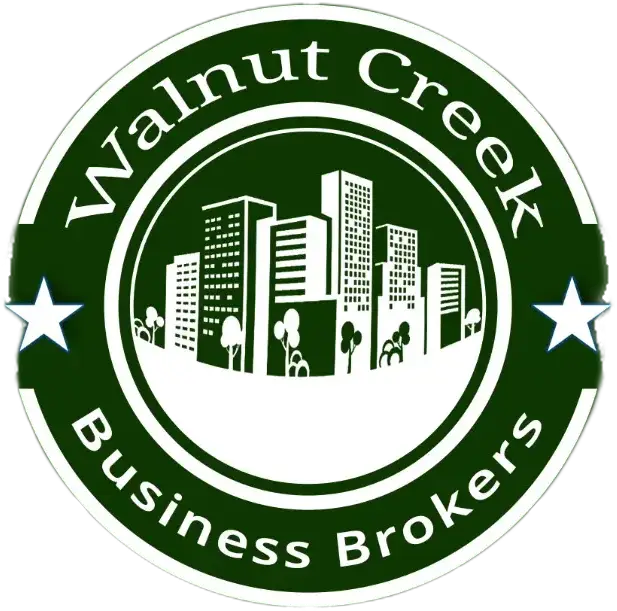The best business exit strategy for maximizing profit and ensuring a smooth transition involves thorough planning and strategic timing. Selling a business requires evaluating its financial health, market conditions, and potential buyers to secure the highest value.
It’s essential to organize detailed financial records, streamline operations, and address any liabilities before the sale. Transitioning smoothly means preparing a succession plan, maintaining clear communication with employees, and supporting the new owner during the handover period.
By focusing on these steps, business owners can achieve a profitable exit while leaving their legacy intact. A well-structured exit strategy not only benefits the seller but ensures the business’s continued success under new leadership.
Key Takeaways
- An effective business exit strategy will go a long way to help you achieve personal, financial, and legacy goals, and help ensure business continuity. It offers a unique, step-by-step plan for charting a course through the often confusing process of exiting business ownership.
- By starting your exit strategy years in advance, you’ll increase the overall value of your business, attract appropriate buyers, and mitigate risk. It enables owners to take advantage of opportunities and sidestep risks that might diminish the business’s value.
- Effective transition planning includes clear communication with stakeholders, comprehensive training for successors, and thorough documentation of processes to ensure operational consistency.
- The key to maximizing business value is to ensure robust financial performance, put risk management practices in place, and build relationships with prospective buyers. Keeping updated business appraisals on hand will allow you to monitor business growth and help make more informed decisions.
- Focusing the exit strategy toward your business’s specific situation is key. Aligning this strategy with your long-term goals will help make what can be a complicated process go very smoothly. Owners’ lifestyle goals, retirement plans, and legacy ambitions should inform their decisions in determining the best way forward.
- It’s important to know the advantages and disadvantages of different strategies. This entails mergers & acquisitions, family succession, and liquidation. Armed with this information, you will be better equipped to make decisions that maximize financial returns while aligning with your goals.
Selling a business is often one of the most emotionally and financially significant decisions an entrepreneur will make. Many business owners dream of cashing out and moving on to their next adventure, but the reality is often much more complex. Without a solid business exit strategy, many sellers face unexpected challenges, reduced business value, and even regret.
In this guide, we’ll explore the hard truths about selling a business and how a well-crafted exit strategy can save you from pitfalls. Whether you’re a first-time business seller or considering your options for the future, this article will give you the expert insights you need to ensure a profitable and smooth transition.

The Emotional And Financial Realities Of Selling Your Business
Facing The Emotional Toll
Business owners pour years of dedication, sweat, and energy into building their companies. The thought of selling can trigger anxiety, fear of regret, and uncertainty about what comes next. Many sellers struggle with questions such as:
- Am I selling at the right time?
- Will I get a fair valuation?
- How will my employees and customers react?
These concerns are valid, and without a clear plan, they can derail the process. However, a well-defined exit strategy can help alleviate doubts by providing clarity and direction.
Financial Realities Of Business Sales
Beyond the emotional aspect, selling a business comes with financial considerations that many owners overlook. These include:
- Business Valuation Challenges: Buyers may not value your business as highly as you do.
- Tax Implications: Capital gains taxes, transfer fees, and other financial considerations can eat into your profits.
- Finding The Right Buyer: Selling to the wrong buyer can result in operational failures post-sale.
A solid exit plan addresses these issues head-on, ensuring you maximize value and avoid costly mistakes.
Why A Business Exit Strategy Is Essential
Maximizing Business Value
A well-structured exit strategy positions your business in the best possible light for potential buyers. This includes:
- Optimizing Financial Records to show strong revenue and profitability.
- Streamlining Operations to make the business more attractive and easier to transition.
- Enhancing Brand Reputation to increase market demand and buyer interest.
Reducing Risks And Ensuring A Smooth Transition
Without an exit strategy, business sales often fall through due to lack of preparation. Common risks include:
- Deals collapsing due to poor financial documentation.
- Buyers renegotiating lower purchase prices.
- Employee uncertainty causing operational disruptions.
By preparing in advance, you minimize these risks and create a seamless transition process.
Choosing The Right Business Exit Strategy
Choosing the right business exit strategy is one of the most important decisions that small business owners will make. It requires a thoughtful approach and strategic planning, analyzing multiple factors to make the exit lucrative and ensure a smooth exit process. Below, we unpack the main topics that inform this exit planning process.
Understanding Your Exit Options
There is no one-size-fits-all approach to exiting a business. Your best option depends on your industry, financial goals, and desired level of involvement post-sale. The most common exit strategies include:
Selling To A Strategic Buyer:
- Best for: Owners looking to maximize valuation.
- Benefits: Higher selling price due to strategic synergies.
- Considerations: Can take longer to find the right buyer.
Merging With A Similar Business:
- Best for: Owners looking for business continuity and financial gain
- Benefits: Retains brand presence and combines resources
- Considerations: Cultural integration challenges.
Family Succession:
- Best for: Owners prioritizing legacy preservation.
- Benefits: Ensures business continuity within the family.
- Considerations: Can create family conflicts if not handled properly.
Selling To An Employee Stock Ownership Plan (ESOP):
- Best for: Owners looking to reward employees while exiting.
- Benefits: Provides a tax-efficient exit strategy.
- Considerations: Requires significant planning and legal structuring.
Initial Public Offering (IPO):
- Best for: High-growth businesses looking for expansion capital.
- Benefits: Potential for high valuation.
- Considerations: Requires significant regulatory compliance and market readiness.
Factors To Consider When Choosing Your Exit Strategy
To determine the best exit strategy for your business, consider the following:
- Industry Trends: Some industries favor mergers, while others see more strategic buyouts. Industries shape exit strategies in various ways. Tech startups especially love mergers, as they usually focus on innovation itself, and their survival depends on swift market adaptation.
Succession plans are more common in family-owned manufacturing businesses. When deciding what best suits your sector, think about the demand in the market, competition levels, and growth potential.
- Financial Goals: Are you looking for a lump-sum payout or a gradual transition? Start by determining what you want to achieve. Do you want to achieve the greatest financial return possible, retain some level of control over your business, or see your business’s legacy preserved?
For example, a founder who wants financial freedom may place the most value on a buyout. On the other hand, companies that prioritize their brand’s reputation might choose mergers instead.
Having well-defined goals focused on outcomes can help narrow options and ensure that you’re not working toward opposing outcomes.
- Personal Aspirations: Do you want to stay involved post-sale, or exit completely? An exit should serve as the perfect capstone to your future endeavors. If your goal is to find new ventures, an outright sale could be a good option.
If you want to stay engaged, partial buyouts are one of several options that offer flexibility. Making sure you align the strategy with your vision will keep you happy with the transition long after you’ve left.
- Stakeholder Impact: How will employees, customers, and investors be affected? Transitions impact employees, investors, and customers. A sale to a competitor might increase uncertainty for employees concerned about their jobs.
An IPO could introduce new pressures from public shareholders. Above all, it’s important to engage transparently and early, and understand the needs of all stakeholders to prevent unnecessary disruptions.
Steps To A Successful Business Exit
1. Conduct A Business Valuation
Understanding your business’s true worth is crucial before entering negotiations. A professional valuation helps:
- Set realistic pricing expectations.
- Strengthen credibility with buyers.
- Identify areas for value enhancement before the sale.
2. Organize Financial And Legal Documents
Buyers will scrutinize your financials, so having well-organized records is essential. Key documents include:
- Profit and loss statements
- Tax returns
- Contracts and agreements
- Employee records
3. Strengthen Business Operations
A well-run business attracts more buyers. Steps to improve operations include:
- Reducing expenses and increasing efficiency.
- Automating processes to reduce dependence on the owner.
- Strengthening customer relationships to ensure long-term loyalty.
4. Find The Right Buyer
Identifying the ideal buyer is critical to a smooth transition. Consider:
- Strategic buyers who see additional value in your business.
- Competitors looking to expand market share.
- Investors seeking profitable business ventures.
5. Negotiate The Sale And Structure The Deal
Work with financial advisors and legal experts to structure a deal that benefits all parties. Key deal structures include:
- Full Buyout: Immediate lump-sum payment.
- Earn-Out Agreement: Payments based on future business performance.
- Equity Retention: Retaining partial ownership for ongoing returns.
6. Communicate The Transition Plan
Employees, customers, and suppliers need reassurance during a transition. Clear communication prevents uncertainty and disruption. Implement:
- Town hall meetings.
- One-on-one discussions with key employees.
- Public announcements when appropriate.
7. Plan For Life After The Sale
A business exit is not just about selling—it’s about what comes next. Consider:
- Retirement plans or new ventures.
- Financial investments to secure post-sale income.
- Personal and professional goals for the future.

Avoiding Common Mistakes When Selling Your Business
Waiting Too Long To Plan
Many business owners delay exit planning until they are ready to sell, which can lead to:
- Rushed decisions.
- Lower valuations.
- Unfavorable deal structures.
Overestimating Business Value
Owners often overestimate their business’s worth, leading to unrealistic expectations. A professional valuation provides an objective market perspective.
Ignoring Tax Implications
Failing to plan for tax obligations can result in significant financial losses. Work with a tax expert to structure a deal that minimizes tax liabilities.
Neglecting Business Operations
During the sale process, it’s easy to neglect daily operations. However, declining performance can reduce buyer interest and lower valuation.
Key Steps For Planning An Exit Strategy
Planning an exit strategy is key to making sure you have a profitable and smooth transition when you’re ready to walk away from your business. An intentional strategy can help safeguard the value you’ve created. Beyond maximizing value, it can ensure your financial objectives are met and position your business for ongoing success.
Let’s look at these key steps for planning an exit strategy to do just that.
Start Planning Early
The earlier you start, the more time you have to really hone every detail of your exit strategy. Experts suggest starting this process three to five years out from when you’d like to exit. This timeline gives you the opportunity to fill any potential gaps, optimize business performance, and maximize value.
If you want to retire and do it comfortably, begin by determining the amount you need to divest. This will ensure you can fund your lifestyle and achieve your legacy goals. A longer timeline increases the chances of attracting the right buyers or exit opportunities, ensuring you don’t miss out on maximizing your business’s market value.
Determine Business Valuation
Knowing how much your business is worth is a key part of that equation. With your bottom line in mind, a professional valuation will give you an understanding of your company’s current market value and identify areas for improvement.
If through the valuation you realize that your financial performance or your position in the industry could be improved, great! You’ll find plenty of time to iterate and correct course. This step takes you through matching the valuation expectation with your personal financial needs and goals.
Ensure the sale meets your retirement or investment goals. Remember, accurate valuation builds credibility with potential buyers, making negotiations smoother.
Build A Strong Leadership Team
A strong leadership team is one of your most important assets. They can provide peace of mind to prospective buyers regarding the business’s operational stability once you’re gone.
Having a clear delegation of responsibilities and a team of leaders who can run the business without the owner’s involvement shows stability and less dependence on the owner. For example, having planned for transition of important client relationships to other team members can prove the business’s durability.
A better team doesn’t just boost buyer confidence – it makes your business more valuable, too.
Prepare Financial And Legal Documents
Detailed and clear documentation is essential for establishing buyer trust. Compile financial statements, tax records, contracts, compliance documents to ensure a consistent story of accuracy.
If you are a startup thinking about going public, the quality of the preparation steps increases, including preparing for and navigating regulatory obligations. Requirements such as audited financials and other extensive disclosures are usually required for public offerings.
Good and thorough documentation prevents last-minute complications and helps the due diligence process go off without a hitch.
Communicate With Stakeholders
Transparent communication with every stakeholder keeps everyone on the same page and prevents chaotic disruption. This means employees, investors, suppliers, and clients who will be impacted by the change should be engaged.
For instance, being open about the timeline and concerns from the outset can prevent a loss of morale and trust down the line. In much the same vein, potential buyers reward honesty in explaining how your various stakeholder interests will be balanced.
Having a diverse group of stakeholders involved in the planning process can help you identify even more ways to improve and clarify your exit strategy.
Timing Your Exit Strategy Effectively
Knowing the ideal timing for your business exit strategy will not only help maximize profitability but also ensure a smooth exit process for employees and stakeholders. A solid exit plan focuses on the current market environment, competitive business performance, and future growth potential, which are essential factors in the overall company exit strategy.
Recognize Market Trends And Opportunities
Knowing what the market looks to buy right now is the key to planning a successful exit strategy. Monitor industry growth, buyer activity, and overall economic conditions to time your exit strategy appropriately. An innovation-oriented tech startup will seek to sell at the height of a boom in innovation funding.
A retail company generally performs well when consumer demand is at an annual high. By keeping an ear to the ground, franchises can find the right windows where potential buyers are ready to pay a premium price.
Keep an eye on your competitors. If other, comparable businesses in your industry are being bought at high multiples, pay attention. If so, now might be the ideal time for you to start planning your own exit.
Leverage trusted industry reports and collaborate with analysts to identify these trends before the pack. Armed with this insight, you can fit your timing to the market demand to capture the most value from your business.
Identify The Right Time To Sell
Timing your sale is more than just the world outside—it’s about the world within, too. Even if you’re looking to exit soon, begin planning at least three to ten years ahead of time. This long-term exit strategy helps you shore up any weaknesses, maximize profitability, and show consistent growth and financial performance to future buyers.
If your business is sitting on legacy systems, get on those replacements yesterday. This will improve your operational efficiency, and it will signal to buyers that your organization is forward-thinking.
Investors are drawn to consistent revenue streams and a strong customer base. Thus, it is important to reinforce these areas far in advance of beginning the sale process.
By working with a Certified Exit Planning Advisor (CEPA), you’ll be armed with a customized roadmap. These professionals can work with you to determine the financial health of your business and get your exit timeline in line with personal financial goals.
Avoid Common Timing Mistakes
One of the greatest pitfalls we see is waiting too long to begin the planning process, resulting in making a quick decision or being undervalued. If economic conditions change dramatically overnight, your industry could be thrown into turmoil.
In that situation, a drawn-out exit might result in a diminished pool of buyers. Starting your plan early helps avoid these pitfalls.
A second big trap is failing to do proper due diligence. Whether it’s a merger, acquisition, or IPO, there’s typically three to five years of work involved. Failing to do this preparation can slow down the process or risk losing deals altogether.
Having the right secure platforms in place to store and share important business information can speed up negotiations and instill confidence in potential buyers.
Lastly, don’t let emotion determine timing. Selling too early out of fear, or waiting too long out of attachment, can compromise decision-making.
By relying on data-driven insights, you can have confidence that your decision will be rooted in the reality of the market and your business—not personal preference.
Preparing For A Smooth Transition
Creating a solid business exit strategy is a complex process that requires vision, strategic planning, and transparency. A smooth exit process increases bottom line profits and helps foster trust and continuity in relationships with employees, clients, and stakeholders during this transition.
Develop A Transition Plan For Leadership
The absence of a leadership transition plan is a tangible gap that can impact business continuity. Whether the exit is a merger, acquisition, or IPO, finding and training a successor needs to start as early as possible.
For example, grooming internal candidates or hiring external talent would make sure any gaps in leadership are filled quickly and effectively. Further, owners can write and formalize extensive legal documentation that clearly delineates the roles, responsibilities, and strategic vision of the company, establishing a roadmap for long-term success.
Ansarada’s company exit software helps you organize the most important data for all stakeholders involved. This ensures the leadership stays on task with their responsibilities through the due diligence. This added clarity not only instills confidence among the investors, it makes the company more attractive.
Communicate Changes To Employees And Clients
Transparent communication builds trust and reduces anxiety and fear of the unknown. Sharing changes in phases allows employees and clients to prepare and adapt accordingly.
For instance, private companies should conduct town halls or set up private, one-on-one meetings to alleviate public concerns and questions. Providing regular updates via internal newsletters or email campaigns ensures that everyone stays on the same page.
Keeping lines of communication open and transparent helps businesses protect morale and keep their best employees on board through the transition. Just like your clients, they value long-term relationships formed with care, and they’ll have peace of mind knowing that their needs will be prioritized even after the transition.
Minimize Disruptions During The Process
Given the enormous costs associated with unplanned disruptions, cutting into their operations and profitability, proactive prevention and protection strategies are imperative.
For instance, centralizing all financial records, contracts, and performance data in an easily accessible but secure platform makes it easy to share with government stakeholders. Thinking ahead—including acknowledging the usual three- to five-year exit horizon—avoids last-minute decisions that put the deal at risk.
Unprepared businesses sell for considerably less, emphasizing the need for business owners to be proactive to get the best possible return on their value.
Final Remarks
Selling a business is a complex but rewarding process when done correctly. A well-planned business exit strategy helps first-time sellers maximize value, minimize risks, and ensure a smooth transition. By understanding your options, preparing early, and seeking expert guidance, you can turn your business sale into a successful and profitable venture.
If you’re considering selling your business in California, Walnut Creek Business Brokers is here to help. Our team of experts specializes in exit planning and business sales, ensuring you get the best possible outcome. Contact us today to start your exit planning journey!
Frequently Asked Questions
1. Why Is An Exit Strategy Important When Selling A Business?
An exit strategy ensures you maximize your business’s value, minimize risks, and facilitate a smooth transition to new ownership. Without one, business owners often face lower sale prices, extended negotiations, and unexpected complications.
2. What Are The Most Common Regrets Business Owners Have After Selling?
Many owners regret not preparing early enough, underestimating emotional attachment, or failing to negotiate a higher valuation. Others feel unprepared for life after selling, making proactive planning crucial.
3. How Can I Choose The Best Exit Strategy For My Business?
The right exit strategy depends on factors like financial goals, market conditions, industry trends, and stakeholder impact. Options include selling to a competitor, passing ownership to family, or pursuing an IPO, each with its own advantages and challenges.
4. When Is The Best Time To Start Planning My Business Exit Strategy?
Ideally, you should begin exit planning at least 3–5 years before you intend to sell. Early preparation helps increase business value, address operational inefficiencies, and ensure you have the right financial and legal structures in place.
5. What Steps Should I Take To Sell My Business Successfully?
Key steps include conducting a professional valuation, organizing financial records, improving operational efficiency, identifying potential buyers, and working with business brokers or legal advisors to negotiate the best deal.
Plan Your Business Exit Strategy With Confidence – Contact Walnut Creek Business Brokers Today!
Thinking about selling your business? Walnut Creek Business Brokers provides expert guidance through every step of the business exit strategy, ensuring a smooth and profitable transition. With in-depth market knowledge and strategic planning, our experienced team works closely with you to develop an exit strategy that aligns with your financial goals and long-term vision.
We offer comprehensive business valuations to help you understand the true market value of your business, ensuring you make informed decisions. Our targeted marketing strategies connect you with the right buyers, maximizing your business’s potential sale price. Our skilled brokers expertly handle negotiations, securing the best possible terms on your behalf. From initial planning to final sale, we manage the entire process, allowing you to exit your business with confidence and peace of mind.
Get in touch with Walnut Creek Business Brokers today for a personalized consultation, and let us help you navigate your business exit strategy with success!


